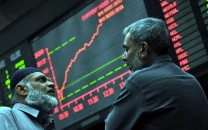China’s reforms not enough to arrest mounting debt: Moody’s
Comments come just days after rating agency downgrades China to A1

Comments come just days after rating agency downgrades China to A1. PHOTO: REUTERS
The comments came two days after Moody’s downgraded China’s sovereign ratings by one notch to A1, saying it expects the financial strength of the world’s second-largest economy to erode in coming years as growth slows and debt continues to mount.
In announcing the downgrade, Moody’s Investors Service also changed its outlook on China from “negative” to “stable”, suggesting no further ratings changes for some time.
China has strongly criticised the downgrade, asserting it was based on “inappropriate methodology”, exaggerating difficulties facing the economy and underestimating the government’s reform efforts.
In response, Moody’s senior official Marie Diron said on Friday that the ratings agency has been encouraged by the “vast reform agenda” undertaken by the Chinese authorities to contain risks from the rapid rise in debt.
However, while Moody’s believes the reforms may slow the pace at which debt is rising, they will not be enough to arrest the trend and levels will not drop dramatically, Diron said.
She said China’s economic recovery since late last year was mainly thanks to policy stimulus, and expects Beijing will continue to rely on pump-priming to meet its official economic growth targets, adding to the debt overhang.
Waiting for implementation
Moody’s also is waiting to see how some of the announced measures, such as reining in local government finances, are actually implemented, Diron, associate managing director of Moody’s Sovereign Risk Group, told reporters in a webcast.
China may no longer get an A1 rating if there are signs that debt is growing at a pace that exceeds Moody’s expectations, Li Xiujun, vice president of credit strategy and standards at the ratings agency, said in the same webcast.
“If in the future China’s structural reforms can prevent its leverage from rising more effectively without increasing risks in the banking and shadow banking sector, then it will have a positive impact on China’s rating,” Li said. He did not give a specific target for debt levels or a timeframe for further assessments.
Moody’s expects China’s growth to slow to around 5% in the coming years, from 6.7% last year, compounding the difficulty of reducing debt. But Diron said the economy will remain robust, and the likelihood of a hard landing is slim. After Moody’s downgrade, its rating for China is on the same level as that on Fitch Ratings, with Standard & Poor’s still one notch above, with a negative outlook.
Stimulus spree
Government-led stimulus has been a major driver of China’s economic growth over recent years, but has also been accompanied by runaway credit growth that has created a mountain of debt - now at nearly 300% of gross domestic product (GDP). Some analysts are more worried about the speed at which the debt has accumulated than its absolute level, noting much of the debt and the banking system is controlled by the central government.
Is Beijing making progress?
The Moody’s downgrade was seen as largely symbolic because China has relatively little foreign debt and local markets are influenced more by domestic factors, with many companies enjoying stronger credit-ratings from home-grown agencies than they would in the west.
Still, the rating demotion highlighted investor worries over whether China has the will and ability to contain rising risks stemming from years of credit-fuelled stimulus, without triggering financial shocks or dampening economic growth. China has vowed to lower debt levels by rolling out measures such as debt-to-equity swaps, reforming state-owned enterprises (SOEs) and reducing excess industrial capacity. But moves so far have been cautious, especially heading into a key political leadership reshuffle later this year.
Published in The Express Tribune, May 28th, 2017.
Like Business on Facebook, follow @TribuneBiz on Twitter to stay informed and join in the conversation.



















COMMENTS
Comments are moderated and generally will be posted if they are on-topic and not abusive.
For more information, please see our Comments FAQ